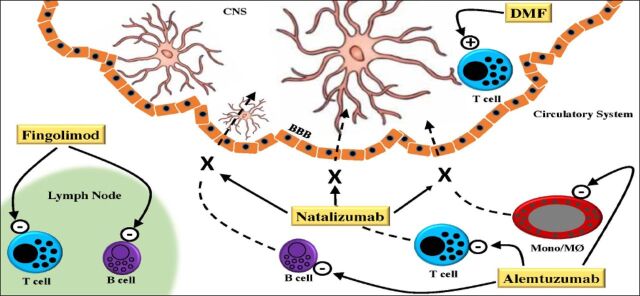Figure 1.
Schematic representation of the mechanisms of action of 4 immune modulating drugs currently used in the treatment of multiple sclerosis (MS). In the circulatory system Alemtuzumab targets CD52, primarily expressed on T and B-cells and monocytes (Mono)/macrophages (MØ) resulting in their depletion. Also in the circulatory system, Natalizumab binds to a4b1-integrin on T-cells, B-cells and Mono/MØ resulting in their reduced migration across the blood-brain barrier (BBB) into the central nervous system (CNS). Fingolimod blocks the release of activated lymphocytes from lymph nodes by targeting sphingosin-1-phosphate receptors. In the CNS, dimethyl fumarate (DMF) switches cytokine production of T-cells that have migrated into the CNS towards a Th2 profile and enhances NRF2, which has immune regulatory and cytoprotective effects on oligodendrocytes, neurons, and glial cells.

